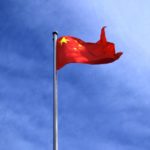
Issue of Enslavement on a Global Scale
By The Walk Free Foundation, Special for USDR
28% more people across the world are trapped in modern slavery than previously estimated, according to the Global Slavery Index 2016
Walk Free Foundation’s Andrew Forrest calls on top ten economies of the world to enact laws to ensure all organisations are held accountable for modern slavery in their supply chains
Significant increase in the estimation of the total number of people enslaved due to enhanced research methodology
North American governments are taking action to respond to modern slavery through national legislation and policies
The most accurate up-to-date analysis of slavery in history
#UnderstandSlavery #EndSlavery
Global Slavery Index 2016 key findings:
— Total number of people enslaved globally: 45.8 million people.
— Enhanced methodology reveals that 10 million more people are enslaved than previously estimated – a 28%increase.
— India remains the country with highest absolute number of people in slavery (18.3m). Its government’s response is strengthening rapidly.
— Survey research includes over 42,000 interviews in 53 languages across 25 countries, representing 44% of global population, including 15 state-level surveys in <spanclass=”xn-location”>India.
— Modern slavery exists in all 167 countries covered by the Global Slavery Index.
— The United States and Canada among countries that demonstrate lowest prevalence of modern slavery, along with countries in Western Europe, and Australia and New Zealand.
— The United States government ranks number two among the list of governments that are taking steps to respond to modern slavery.
— North Korea has the highest incidence of modern slavery (4.37% of population) and weakest government response.
LONDON and PERTH, Australia, May 31, 2016 /PRNewswire-USNewswire/ — An estimated 45.8 million men, women and children around the world are today trapped in modern slavery1 – 28% more than previously estimated. They are enslaved through human trafficking, forced labour, debt bondage, forced or servile marriage or commercial sexual exploitation. This is revealed in the 2016 Global Slavery Index, the flagship research report published today by the Walk Free Foundation.
North Korea is the country with the greatest prevalence of modern slavery, with 4.37% of its population estimated to be enslaved. It is also the country with the weakest government response in terms of actions taken to combat modern slavery. The next highest prevalence of slavery is found in Uzbekistan (3.97%), followed by Cambodia (1.65%).
Canada and the United States are among the list of nations that demonstrate the lowest prevalence of slavery in the 2016 Index, at 0.018%, along with many Western European countries, and Australia and New Zealand. In absolute numbers, the United States is estimated to count 57,700 and Canada 6,500 enslaved people.
In terms of absolute numbers, India remains the highest with an estimated 18.35 million enslaved people, followed by China(3.39m), Pakistan (2.13m), Bangladesh (1.53m) and Uzbekistan (1.23m). Combined, these five countries account for almost 58% of the world’s enslaved, or 26.6 million people.
The 2016 Global Slavery Index estimates that 28% more people are enslaved than reported in the 2014 edition. This significant increase is due to enhanced data collection and research methodology. Survey research for the 2016 Global Slavery Index included over 42,000 interviews conducted in 53 languages across 25 countries, including 15 state-level surveys in India. These representative surveys cover 44% of the global population.
In 2016 the Walk Free Foundation, Gallup, and Polaris undertook survey research to better understand the general awareness of the NHTRC’s hotline number among the American public, through the Gallup U.S. nightly public opinion survey. Ultimately, the results suggest that a relatively small proportion of the American public are informed about it, with only 6.7% indicating they know the NHTRC specifically and 12% aware that there is a hotline focused on human trafficking. This indicates that the 5,544 cases reported in 2015 is likely a small proportion of the actual prevalence of human trafficking in the United States.
Government response
The Global Slavery Index also tracks government actions and responses to modern slavery. Of the 161 assessed2, 124 countries have criminalised human trafficking in line with the UN Trafficking Protocol and 96 have developed national action plans to coordinate government response. The governments leading the charge against modern slavery are The Netherlands, the United States of America, the United Kingdom, Sweden, Australia, Portugal, Croatia, Spain, Belgium and <spanclass=”xn-location”>Norway.
Some significant progress has been made by many governments since the publication of the 2014 report. The UK Government introduced the Modern Slavery Act 2015 and has appointed an Independent Anti-Slavery Commissioner, Mr Kevin Hyland. President Barack Obama closed a loophole in US law to now ban the importation of goods made with forced or child labour.
The United States government ranks number two among the list of governments that are taking steps to respond to modern slavery, most of which are predominantly high GDP countries. Within the Americas, following the United States, the highest government response rankings were held by Argentina, Canada and <spanclass=”xn-location”>Brazil, respectively.
The United States offers a model for survivor leadership. President Barack Obama has formed an Advisory Council on Human Trafficking made up entirely of survivors, while a national network of over 200 survivors across the country meet regularly to work on strategic advocacy at both local and national levels. Additionally, the Senior Policy Operating Group (SPOG) of the President’s Interagency Task Force on Human Trafficking reported in 2015 that the federal government has achieved the first Partnership for Freedom competition that encourages public-private partnerships to innovate solutions to problems related to modern slavery as well as cross-agency collaboration on the Anti-Trafficking Coordination Team (ACTeam) Initiative and implementation of the Federal Strategic Action Plan on Services to Victims of Human Trafficking in the United States. In 2015, the US Government also established the Office on Trafficking in Persons (OTIP), a new bureau dedicated to trafficking in persons in the Department of Health and Human Services which aims to establish a cohesive national human trafficking victim service delivery system for all trafficking victims in the United States.
Countries such as Croatia, Montenegro, Brazil, Macedonia, the Philippines, Georgia, Moldova, Albania and Jamaica are taking positive steps to respond to modern slavery relative to their wealth.
While India has more people enslaved than any other country, it has made significant progress in introducing measures to tackle the problem. It has criminalised trafficking, slavery, forced labour, child prostitution and forced marriage. The Indian government is currently tightening legislation against human trafficking, with tougher punishment for repeat offenders. It will offer victims protection and recovery support.
Call to action
Mr Andrew Forrest, Chairman and Founder of Walk Free Foundation, said eradicating slavery makes sense, morally, politically, logically and economically, and called on the governments of the world’s leading economies to provide an example to others by enacting and implementing robust anti-slavery measures.
“We call on governments of the top 10 economies of the world to enact laws, at least as strong as the UK Modern Slavery Act 2015, with a budget and capability to ensure organisations are held to account for modern slavery in their supply chains, and to empower independent oversight. Leaders of the world’s major economies must bring the power of business to this issue, by requiring a focus on supply chain transparency.”
“I believe in the critical role of leaders in government, business and civil society,” Mr Forrest said. “Through our responsible use of power, strength of conviction, determination and collective will, we all can lead the world to end slavery.”
Mr Forrest emphasised the key role that business needs to play in eradicating slavery: “Businesses that don’t actively look for forced labour within their supply chains are standing on a burning platform. Business leaders who refuse to look into the realities of their own supply chains are misguided and irresponsible.”
The Global Slavery Index report can be found at www.globalslaveryindex.org
Notes to Editors
Slavery exists in each of the 167 countries included in the Index
Highest prevalence:
Prevalence: 1. North Korea (4.37%); 2. Uzbekistan (3.97%); 3. Cambodia (1.65%); India (1.40%) Qatar (1.36%).
Absolute numbers: 1. India (18.35m); 2. China (3.39m); 3. Pakistan (2.13m); 4. Bangladesh (1.53m); 5. Uzbekistan (1.23m).
Lowest prevalence: 52. (All with 0.02% prevalence): Luxembourg; New Zealand; Ireland; Norway; Denmark; Switzerland;Austria; Sweden; Belgium; Australia; Canada; Spain; United Kingdom; France; Germany; US.
Strongest action: 1. Netherlands; 2. US; 3. UK; 4. Sweden; 5. <spanclass=”xn-location”>Australia.
Weakest action: 161. North Korea; 160. Iran; 159. Eritrea; 158. Equatorial Guinea; 157. Hong Kong SAR, <spanclass=”xn-location”>China.
About the Index:
The Global Slavery Index gives the most accurate and comprehensive measure of the extent and risk of modern slavery available today. It is the only global report of its kind, providing a country-by-country estimate of the number of people living in modern slavery today, an analysis of its prevalence in terms of the percentage of a national population and the total number of people enslaved in 167 countries. The Global Slavery Index also measures government responses and actions to combat modern slavery.
The prevalence estimates in the Index draw on over 42,000 face to face interviews conducted in 53 languages, covering 44% of global population. Where surveying could not be done, these results were extrapolated to countries with an equivalent risk profile. We develop that risk profile by looking at 24 variables, covering key indicators such as risk of corruption, conflict, discrimination and violence in the population.
We have tested our 2014 extrapolated results against later survey results – and they are within 1% of each other, when taken as a percentage of population which is what the Index measures. We use an internationally recognised company Gallup. All work is guided by an Expert Working Group of imminent statisticians and subject matter experts, and also has been subjected to external review. We have published our methodology in various peer reviewed journals.
The Global Slavery Index is a critical tool for governments, citizens, NGOs and businesses to end slavery. The methodology for the Index was developed through extensive consultations with an international and independent Expert Advisory Group.
About the Walk Free Foundation:
The hidden, global and complex nature of modern slavery has led the Walk Free Foundation to develop an integrated strategy to sustainably respond to this crime. This includes the generation of high quality research; a private donor fund to scale up effective interventions; engagement with the world’s major leaders, and organisations including faiths; and support for a global coordinated strategy. The Foundation also incubated a global movement of supporters with a shared vision to end modern slavery.
1 Please note that throughout, the terms ‘enslaved’ and ‘slavery’ are used as synonyms of ‘modern slavery’ and should not be interpreted to suggest traditional slavery in which people were held in bondage as legal property, which has been outlawed in every country across the world.
2 Due to the ongoing conflict and extreme disruption to government function, ratings for Afghanistan, Iraq, Libya, Somalia, Syriaand Yemen have not been included.
SOURCE The Walk Free Foundation





